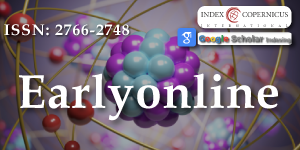Calculation of Neutrino Masses for the Moment of their Birth
Main Article Content
Abstract
In the article, the author presented his original explanation for the origin of small masses of mysterious neutrino particles. A formula for neutrino masses was obtained for the moment of their birth, using results for the neutrino charge radius, received by several theoretical groups, and the masses of three types are calculated. The paper assumes that the main contribution to the neutrino mass (2/3) comes from their small electrostatic energy.
Article Details

This work is licensed under a Creative Commons Attribution 4.0 International License.
The International Journal of Physics Research and Applications is committed in making it easier for people to share and build upon the work of others while maintaining consistency with the rules of copyright. In order to use the Open Access paradigm to the maximum extent in true terms as free of charge online access along with usage right, we grant usage rights through the use of specific Creative Commons license.
License: Copyright © 2017 - 2025 |  Open Access by International Journal of Physics Research and Applications is licensed under a Creative Commons Attribution 4.0 International License. Based on a work at Heighten Science Publications Inc.
Open Access by International Journal of Physics Research and Applications is licensed under a Creative Commons Attribution 4.0 International License. Based on a work at Heighten Science Publications Inc.
With this license, the authors are allowed that after publishing with the journal, they can share their research by posting a free draft copy of their article to any repository or website.
Compliance 'CC BY' license helps in:
| Permission to read and download | ✓ |
| Permission to display in a repository | ✓ |
| Permission to translate | ✓ |
| Commercial uses of manuscript | ✓ |
'CC' stands for Creative Commons license. 'BY' symbolizes that users have provided attribution to the creator that the published manuscripts can be used or shared. This license allows for redistribution, commercial and non-commercial, as long as it is passed along unchanged and in whole, with credit to the author.
Please take in notification that Creative Commons user licenses are non-revocable. We recommend authors to check if their funding body requires a specific license.
Buravov LI. Confining Potential and Mass of Elementary Particles. Journal of Modern Physics. 2016;7:129-133. Available from: https://doi.org/10.4236/jmp.2016.71013
Buravov LI. Elementary muon, pion, and kaon particles as resonators for neutrino quanta. Calculations of mass ratios for e, μ, π0, π±, K 0, K ±, and ν e. 2009. Russian Physics Journal, 52: 25-32. Available from: https://doi.org/10.1007/s11182-009-9196-5
Bernstein J, Lee TD. Electromagnetic Form Factor of the Neutrinos. Physical Review Letters. 1963;11:512-516. Available from: https://doi.org/10.1103/PhysRevLett.11.512
Lee TD, Sirlin A. Possible Method of Determining the Moment of Charge of ve. Reviews of Modern Physics. 1963;36: 666-669. Available from: https://doi.org/10.1103/RevModPhys.36.666
Cheng WK, Bludman SA. Electromagnetic Form Factor of the Neutrino. Physical Review. 1964;136B: 1787-1790. Available from: https://doi.org/10.1103/PhysRev.136.B1787
Meyer PH, Schiff D. The electromagnetic form factor of the neutrino. Phys Letters. 1964;8:217. Available from: https://doi.org/10.1016/S0031-9163(64)92003-7
Bernabeu J, Cabral-Rosetti LG, Papavassiliou J, Vidal J. Charge radius of the neutrino. Phys Rev. 2000;DV62:113012. Available from: https://doi.org/10.1103/PhysRevD.62.113012
Hajdukovic DS. On the absolute value of the neutrino mass. Mod Phys Lett. 2011;26:N21: 1555-1559. Available from: http://arxiv.org/abs/1106.5810
Nakamura K, Petcov ST. Simple way to calculate neutrino masses. Journal of Physics. 2010;G.37:164-183. Available from: http://dx.doi.org/10.17352/amp.000053

